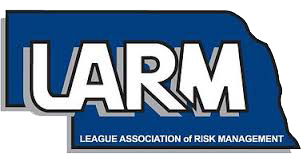
With mask mandates no longer in effect and risk dials in the non-dangerous green zone, many offices are taking down the plexiglass barriers set up between staff and members of the public at the height of the pandemic. Should these barriers be removed? There are arguments for both taking them down and leaving them up.
Many workplaces, especially those with workers who need to interact with the general public, are choosing to keep the barriers in place. Having the barrier up protects workers from the many germs that can be spread by those who cough or sneeze, distributing thousands of respiratory droplets within six feet. Although the danger of getting a Covid variant has decreased, many viruses are circulating that can be spread through droplets in the air. Plexiglass barriers can also limit hand transmitted germs and bacteria when exchanging checks or documents. With a plexiglass barrier, these documents are often slid under the barrier limiting physical contact. Many workers also appreciate the perceived security that a plastic barrier provides by providing a physical distance between them and members of the public. The barrier can provide a physical and also a psychological barrier that may deescalate an angry customer’s demeanor.
There are also reasons that an organization may want to take down barriers. Although the plexiglass barriers have proven to be helpful in preventing the transmission of the droplets from germs and bacteria, recent studies suggest that the barriers do not help prevent the spread of Covid 19 variants. It’s been proven that COVID 19 is transmitted as an aerosol, and good circulation is necessary to dissipate the particles. The plastic barriers, rather than preventing the transmission of these particles, are likely to trap the aerosols in the area. Airflow is the key to dissipating the aerosols, and the plexiglass barriers have been proven to restrict that airflow.
Many complain that it's difficult to hear when the plexiglass sits between staff and the public. The barrier may be unpopular with citizens who perceive it as an unnecessary separation between them and those behind the barrier. The plastic barrier may take up valuable space needed to sign or share documents. It is also essential to routinely disinfect the plexiglass to allow clear viewing and a clean workspace. So what is an organization to do about plexiglass barriers?
Although the CDC has recently removed its recommendation to use plastic barriers, organizations will need to consider the various implications of using the barriers. All staff may want to weigh in on the advantages and disadvantages of continuing to use plastic barriers in the workplace.
